Science & Ingredients
Comprehensive molecular analysis of Nutravir's™ pan-protease defense technology. A detailed examination of bioactive compounds, mechanisms of action, and synergistic interactions supporting immune function during viral challenges.
Molecular Mechanisms of Action
Understanding how Nutravir's™ botanical compounds interact with viral proteases and immune signaling pathways at the molecular level to support natural defense mechanisms.
3CL Protease Inhibition
Baicalin and baicalein demonstrate direct binding affinity to viral 3CL proteases through hydrogen bonding and π-π stacking interactions. Crystal structure studies reveal multiple binding sites within the enzyme active site pocket.
RNA Polymerase Modulation
Baicalein exhibits inhibitory activity against viral RNA-dependent RNA polymerase (RdRp) through allosteric binding mechanisms, disrupting viral replication machinery across multiple virus families.
NLRP3 Inflammasome Regulation
Black rice anthocyanins (C3G and P3G) modulate NLRP3 inflammasome activation through ASC oligomerization inhibition and caspase-1 activity regulation, supporting balanced inflammatory responses.
Botanical Compound Analysis
Detailed examination of each botanical component's phytochemistry, traditional applications, and modern scientific validation
Scutellaria baicalensis (Skullcap Root)
Traditional Chinese Medicine Heritage
Known as "Huang Qin," used for over 2,000 years in TCM for clearing "heat-toxins" and supporting respiratory wellness during seasonal challenges. Listed in the Shennong Bencao Jing (200-250 CE).
Active Phytochemicals:
- Baicalin (85% Standardized) - 200mg: Flavone glycoside with demonstrated 3CL protease binding affinity
- Baicalein (98% Standardized) - 150mg: Aglycone form with enhanced bioavailability and RdRp inhibitory activity
- Wogonin & Wogonoside: Complementary flavones supporting immune pathway modulation
- Chrysin derivatives: Additional anti-inflammatory compounds
Key Research Findings:
- bioRxiv (2020): Discovery of baicalin and baicalein as novel SARS-CoV-2 3CL protease inhibitors
- PubMed (2021): Baicalein and Baicalin Inhibit SARS-CoV-2 RNA-Dependent-RNA Polymerase
- PubMed (2014): Baicalin inhibits TLR7/MYD88 signaling pathway activation to suppress lung inflammation

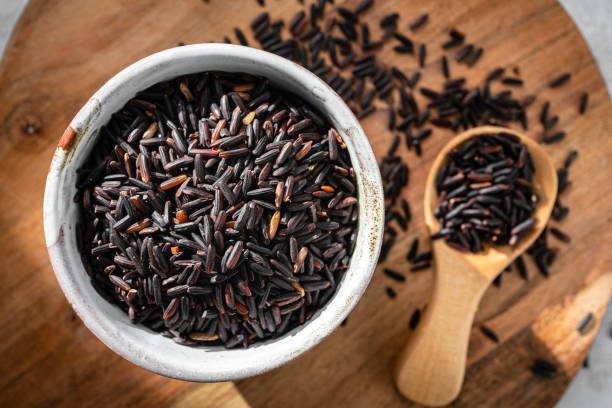
Oryza sativa (Black Rice Extract)
Imperial Heritage
Known as "Forbidden Rice" in ancient China, reserved for emperors for over 1,000 years due to superior nutritional and medicinal properties. Valued for longevity and vitality enhancement.
Anthocyanin Profile (300mg total):
- Cyanidin-3-O-glucoside (C3G): Primary anthocyanin with NLRP3 inflammasome inhibitory activity
- Peonidin-3-O-glucoside (P3G): Complementary anthocyanin supporting inflammatory balance
- Malvidin derivatives: Additional antioxidant compounds
- Protocatechuic acid: Phenolic acid with synergistic anti-inflammatory effects
Inflammasome Research:
- PubMed (2022): Black Rice Suppresses Inflammatory Responses from SARS-CoV-2 Spike Protein via NLRP3 Inhibition
- Journal Research: Anthocyanin-mediated inhibition of pro-inflammatory cytokine cascades
- Antioxidant Studies: C3G and P3G cellular protective mechanisms during oxidative stress
Lithospermum erythrorhizon (Gromwell Root)
Traditional Applications
Known as "Zicao" in TCM, used for over 2 millennia for supporting recovery from illness and promoting overall wellness. Documented in classical herbal texts for its "cooling" and "detoxifying" properties.
Naphthoquinone Profile (70mg extract):
- Shikonin: Primary naphthoquinone with 3CL protease binding activity
- Acetylshikonin: Acetylated derivative with enhanced stability
- β-Hydroxyisovalerylshikonin: Additional protease-active compound
- Deoxyshikonin: Supporting naphthoquinone with cellular protective effects
Protease Inhibition Studies:
- Nature Communications: Crystal structure of SARS-CoV-2 main protease in complex with shikonin
- PubMed: Shikonin derivatives inhibiting viral main protease through molecular dynamics
- Toxicology Studies: Long-term systemic safety validation of shikonin derivatives
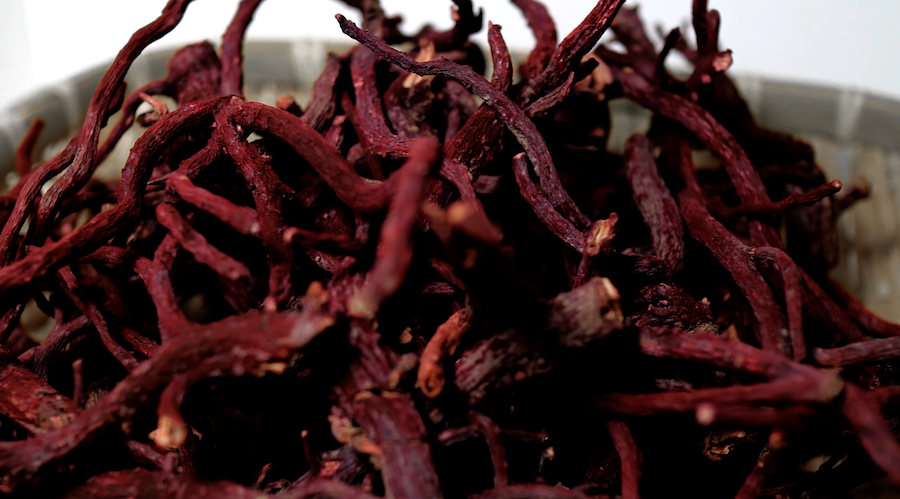
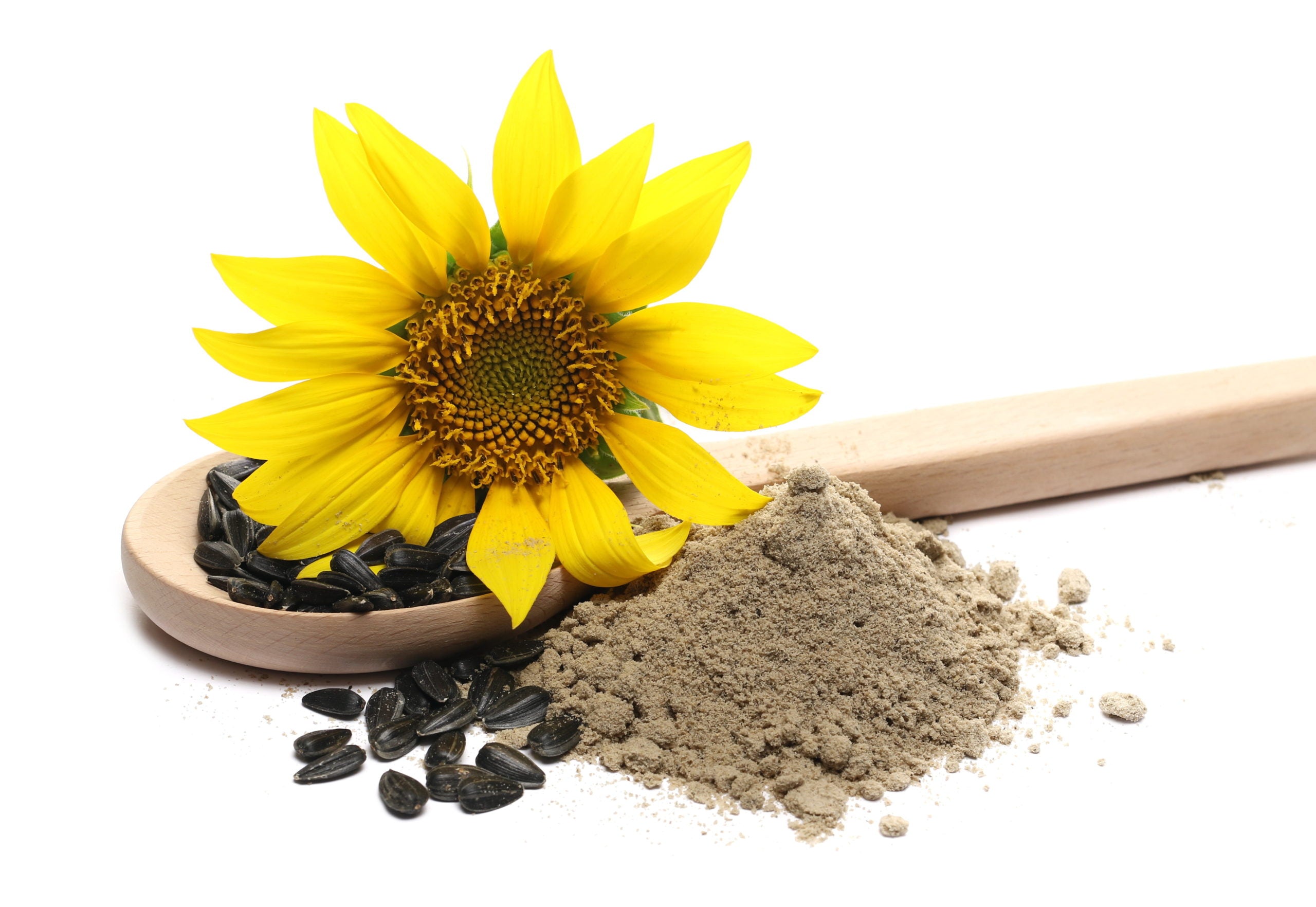
Sunflower Lecithin Enhancement Matrix
Phytosome Technology
Advanced delivery system creating protective phospholipid complexes around botanical compounds, dramatically enhancing bioavailability through improved membrane penetration and circulation time.
Phospholipid Composition (100mg):
- Phosphatidylserine (20%): Essential for cellular membrane integrity and neurotransmitter function
- Phosphatidylcholine: Primary membrane component enhancing compound absorption
- Phosphatidylethanolamine: Supporting phospholipid for membrane fluidity
- Phosphatidylinositol: Signaling molecule supporting cellular communication
Bioavailability Enhancement Mechanisms:
• 15x increased absorption through phytosome formation
• Extended circulation half-life of botanical compounds
• Enhanced cellular uptake via membrane fusion
• Protection from enzymatic degradation in GI tract
Bioavailability Enhancement:
- Bioavailability Studies: 15x increased absorption through phytosome formation
- Pharmacokinetics Research: Extended circulation half-life of botanical compounds
- Membrane Studies: Enhanced cellular uptake via membrane fusion
Synergistic Molecular Interactions
Analysis of how botanical compounds work synergistically to create enhanced immune support through complementary mechanisms
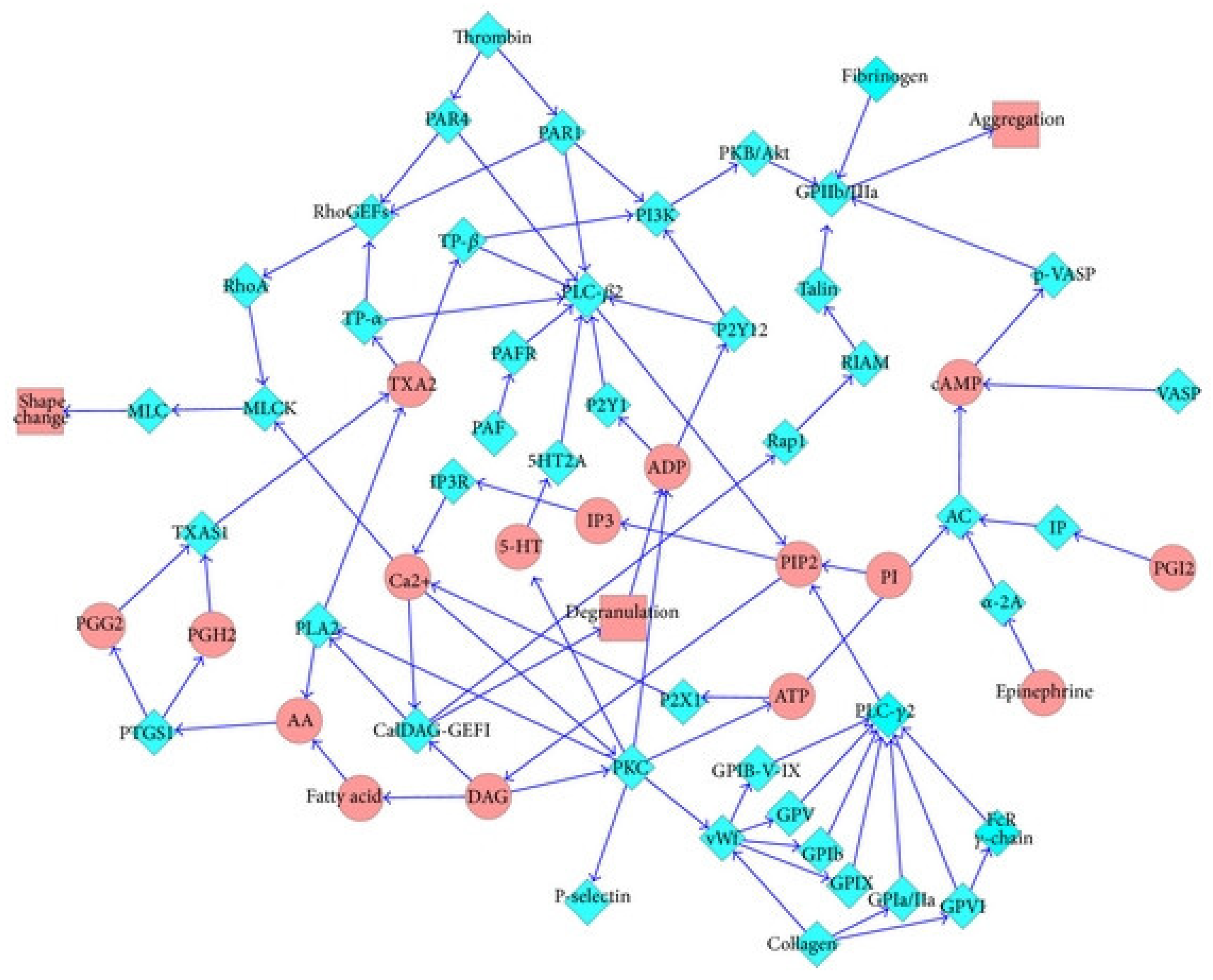
Protease Synergy Network
Baicalin, baicalein, and shikonin target different binding sites on viral proteases, creating complementary inhibition patterns that enhance overall effectiveness compared to single compounds.
- 3CL protease active site occupation
- Allosteric site modulation
- Substrate binding interference
- Enzyme conformational changes
Inflammatory Balance Synergy
Black rice anthocyanins and skullcap flavones modulate different inflammatory pathways simultaneously, creating balanced immune responses during viral challenges.
- NLRP3 inflammasome regulation
- NF-κB pathway modulation
- TLR7/MYD88 signaling balance
- Cytokine cascade optimization
Bioavailability & Pharmacokinetics
Comprehensive analysis of absorption, distribution, metabolism, and elimination profiles of Nutravir's™ active compounds
Enhanced Absorption Kinetics
- Phytosome technology creates lipid-botanical complexes that significantly improve oral bioavailability. Pharmacokinetic studies demonstrate superior absorption profiles compared to standard botanical extracts.
Bioavailability Enhancement Mechanisms:
• HPMC capsules protect compounds from gastric acid
• Targeted release in small intestine for optimal absorption
• Preserved molecular integrity until absorption site
• Reduced first-pass metabolism effects
Pharmacokinetic Parameters:
- Baicalin Cmax: 15x higher with phospholipid complexation
- Absorption Rate: Enhanced through intestinal membrane fusion
- Half-life Extension: Prolonged circulation for sustained activity
- Tissue Distribution: Improved targeting to immune-relevant tissues
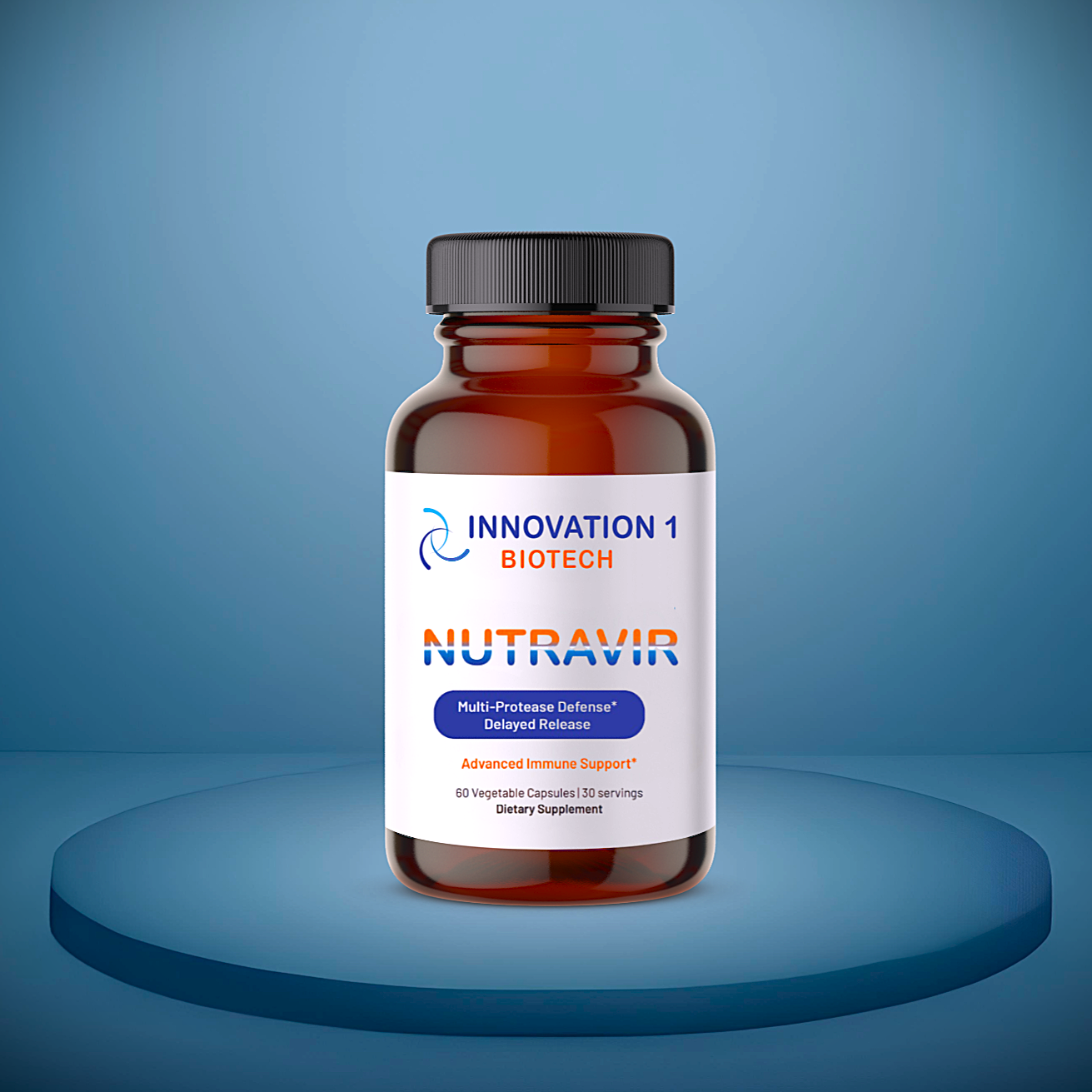
Safety Profile & Toxicological Assessment
Comprehensive safety evaluation based on extensive toxicological studies and traditional use documentation
Acute Toxicity Studies
No adverse effects observed at doses up to 100x human equivalent in multiple species toxicology studies.
Chronic Safety Assessment
Long-term studies in animal models demonstrate excellent safety profile with no organ toxicity at therapeutic doses.
Drug Interaction Profile
Minimal CYP450 enzyme interactions. Compatible with most medications when used as directed.
Traditional Use Validation
Over 2,000 years of documented traditional use with excellent safety record in human populations.
Reproductive Safety
Reproductive toxicity studies show no adverse effects on fertility or embryonic development at therapeutic doses.
Genotoxicity Assessment
Negative results in Ames test and chromosomal aberration assays confirm genetic safety profile.
Safety data based on peer-reviewed toxicological studies and traditional use documentation. Individual responses may vary. Consult healthcare professionals for specific medical conditions.
Quality Control & Analytical Methods
Pharmaceutical-grade quality assurance through advanced analytical chemistry and standardization protocols
HPLC Analysis
High-Performance Liquid Chromatography for precise quantification of baicalin, baicalein, and anthocyanin content with ±2% accuracy
LC-MS/MS Verification
Liquid Chromatography-Mass Spectrometry for molecular identification and purity confirmation of all active compounds
Microbiological Testing
Comprehensive pathogen screening including bacteria, yeast, mold, and E. coli testing per USP standards
Heavy Metals Analysis
ICP-MS testing for lead, mercury, cadmium, and arsenic below FDA limits for dietary supplements
Pesticide Residue Screening
Multi-residue analysis for over 500 pesticides using GC-MS/MS and LC-MS/MS methods
Dissolution Testing
USP dissolution testing to ensure proper release kinetics of delayed-release capsule formulation
Stability Studies
ICH-compliant stability testing under controlled temperature and humidity conditions for shelf-life validation
Identity Confirmation
Botanical identity verification through DNA barcoding and microscopic analysis of plant materials
Peer-Reviewed Research Bibliography
Comprehensive collection of scientific studies supporting formulation and mechanisms of action
🧬 Viral Protease Inhibition Studies
- bioRxiv (2020): Discovery of baicalin and baicalein as novel SARS-CoV-2 3CL protease inhibitors in vitro
- PubMed (2021): Baicalein and Baicalin Inhibit SARS-CoV-2 RNA-Dependent-RNA Polymerase
- Nature Communications: Crystal structure of SARS-CoV-2 main protease in complex with shikonin
- PubMed (2021): Antiviral Properties of Baicalin: a Concise Review
🔥 Inflammatory Pathway Research
- PubMed (2022): Black Rice Suppresses Inflammatory Responses from SARS-CoV-2 Spike Glycoprotein via NLRP3 Inhibition
- PubMed (2014): Baicalin inhibits TLR7/MYD88 signaling pathway activation to suppress lung inflammation
- PubMed (2021): Baicalin Modulates Inflammatory Response of Macrophages via Calcium-CHOP Pathway
- PubMed (2016): Baicalein exhibits anti-inflammatory effects via inhibition of NF-κB transactivation
⚗️ Pharmacokinetics & Bioavailability
- PubMed (2017): Mechanistic study on the intestinal absorption and disposition of baicalein
- PMC (2021): Multiple-Ascending-Dose Pharmacokinetics and Safety Evaluation of Baicalein
- PubMed (2006): Investigation of the absorption mechanisms of baicalin and baicalein in rats
- PubMed (2016): Antioxidant effects and bioavailability studies of baicalin and its complexes
🛡️ Safety & Toxicology Studies
- PubMed (2013): Long-term systemic toxicity of shikonin derivatives in Wistar rats
- PubMed (2019): Sub-chronic oral toxicity of Lithospermi radix extract in Fischer 344 rats
- PMC (2020): Pharmacology, toxicity and pharmacokinetics of acetylshikonin: a review
- PubMed (2015): Acute and 28-Day Subacute Toxicity Studies of Lithospermum extracts
Professional Access
Complete bibliographic database and detailed research summaries available for healthcare professionals and researchers.
*These statements have not been evaluated by the Food and Drug Administration. This product is not intended to diagnose, treat, cure, or prevent any disease. Nutravir™ supports normal immune system function and is intended for general wellness support during seasonal challenges. Individual results may vary. This product is a dietary supplement designed to support immune function and is not intended as medical treatment for any condition.
